Best Microphones for Streaming
A good mic like the Blue Yeti X or the Samson G Track Pro is essential if you want to enter the streaming world. Here are the best microphones for streaming, podcasting and gaming in general.
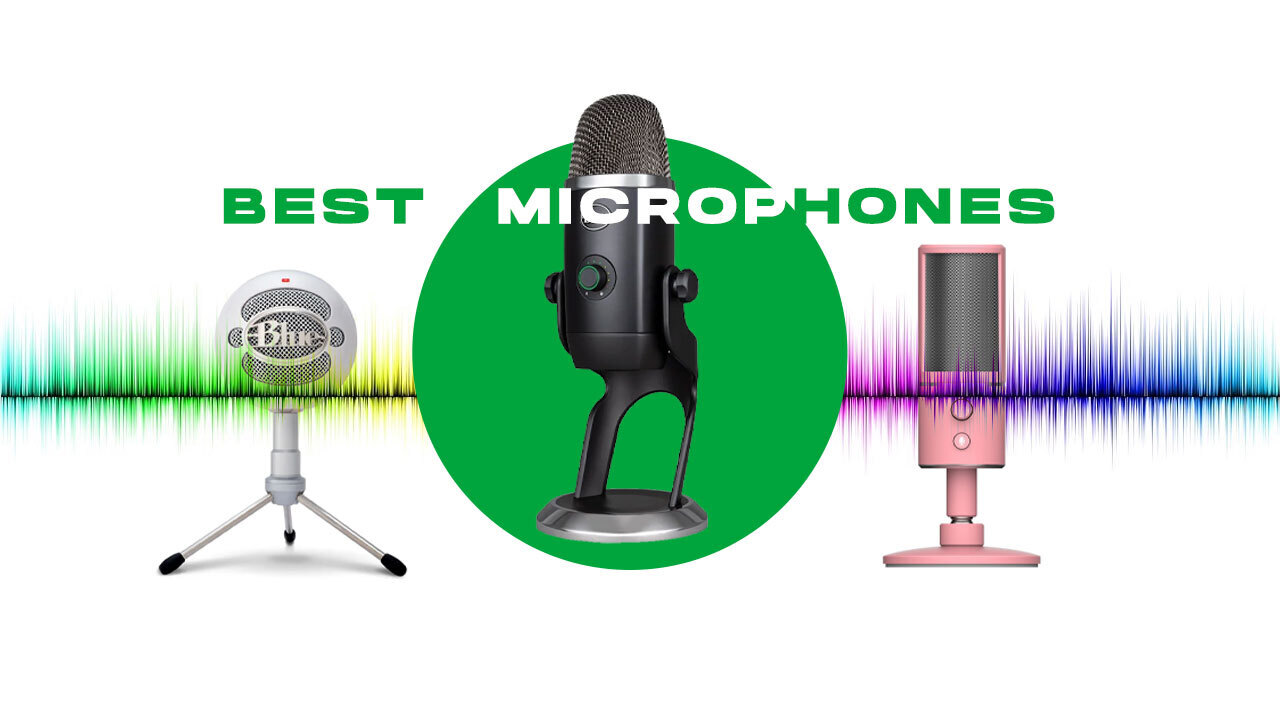
Every microphone records sound, but not all of them will do the job equally well in different circumstances. If we're looking for the best streaming microphone within a given budget, considering the price and brand does matter, but it's the specification of the hardware that’s the most significant. We need to remember there are two main types of microphones we should consider for the purposes of streaming, namely condenser and dynamic mics. Then, the more specific criterion is the microphone's pick-up pattern, aka directionality, aka polar pattern (which determine the mic’s ability to pick up sounds from different directions) – the types to consider are:
- Cardioid microphones,
- Supercardioid microphones,
- Bi-directional microphones,
- Omni-directional microphones.
On top of that, we can easily find microphones that combine more than one pick-up type. So, which audio recording devices are the best for streaming?
Blue iCE Snowball
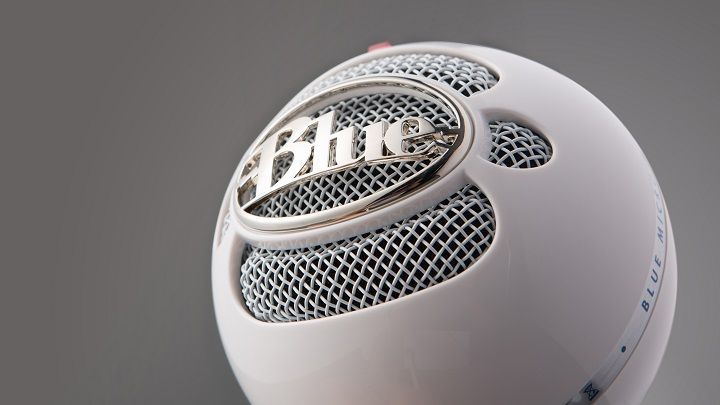
The Blue iCE Snowball is one of the most popular microphones among novice streamers. The great advantage of this mic is its excellent value for money and accessibility. It's a plug-and-play USB microphone, which means it doesn't need an external audio interface or a preamplifier. The Blue ICE Snowball is a cardioid microphone whose pickup sound range is 180° in front of the microphone. This helps a lot with eliminating distortions and volume inconsistency that stems out from moving in front of the mic (you don't have to be directly in front of it).
Advantages:
- Price,
- Accessibility,
- Decent sound quality.
Buy Blue iCE Snowball on Bluemic.com
Buy Blue iCE Snowball on Amazon.com
Razer Seiren X
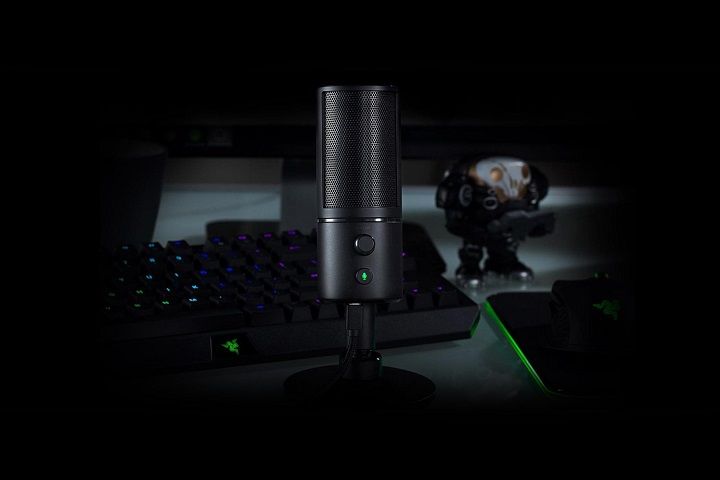
Razer is known for high-quality electronic accessories. The Razer Seiren X microphone is proof that the company can also make good sound recording equipment. This supercardioid mic captures sound within the area of 115° in front of the barrel and is a much better choice if you're looking for a microphone for voice recording – the advantage of a cardioid microphone is that it is more selective, thus helping to suppress ambient noise more effectively, focusing more of what's in front of it.
Advantages:
- Supercardioid characteristics,
- Built-in noise reduction
- Volume control.
Buy Razer Seiren X on Razer.com
Buy Razer Seiren X on Amazon.com
HyperX Quadcast S
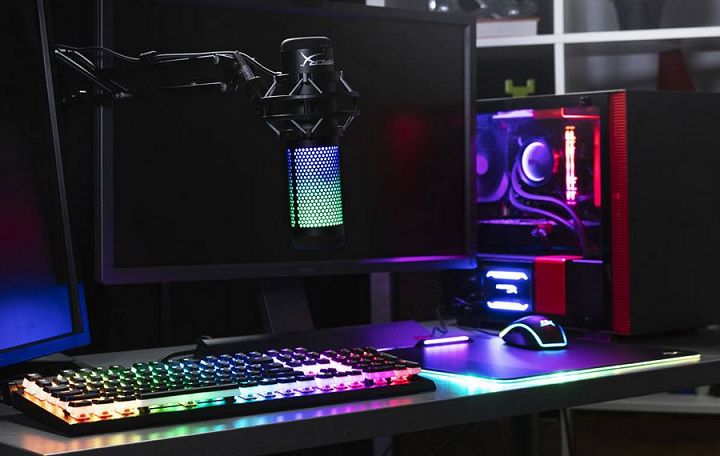
We're entering the higher tier of streaming microphones. HyperX Quadcast S combines several available polar patterns, namely cardioid, bi-directional and omni-directional. In the cardioid setting, the microphone picks up sound from 180° in front of the barrel. In the bi-directional setting, it will pick up the sound from two sources at 90° from the barrel, which makes it perfect for using a single mic for face-to-face interviews. HyperX Quadcast S also allows you to select an omnidirectional setting, allowing the mic to record sound from a 360° field, which is great if you have more people in the room that you want to record.
Advantages:
- Cardioid, bi-directional and omni-directional settings to choose from
- Built-in pop-filter
- Microphone sensitivity adjustment,
- Anti-shock design.
Buy HyperX Quadcast S on Amazon.com
Samson G Track Pro
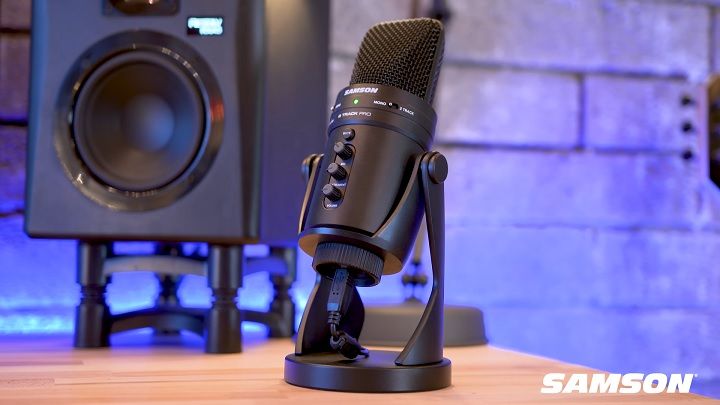
Samson G Track Pro also offers three characteristics to choose from: cardioid (180°), bi-directional, for two opposite sources, and omni-directional, for all-direction pick-up. What sets the Samson G Track Pro apart from many other microphones is that it has a built-in audio interface that allows you to connect an instrument or midi controller and use it while streaming.
Advantages:
- Very high quality of recorded sound,
- Built-in audio interface,
- Cardioid, bi-directional and omni-directional pick-up pattern.
Buy Samson G Track Pro on Amazon.com
Blue Yeti X

The Blue Yeti X offers undoubtedly the best sound quality from all the microphones on this list. This piece of gear also has three characteristics to choose from: cardioid, bi-directional and omni-directional, plus it's easy to use, as it’s a plug-and-play USB microphone. This makes it a fantastic multi-purpose microphone with very high-quality sound output, without the requirement to connect it to an external interface or a preamp.
Advantages:
- Very high quality of recorded sound,
- Cardioid, bi-directional and omni-directional settings to choose from
- Plug-and-play technology,
- The ability to connect headphones directly to the microphone.
Buy Blue Yeti X on Bluemic.com
Which microphones are used by the most popular streamers?
If you want to start your own streaming adventure, it's likely that you were inspired by some of the most popular streamers, who have been doing it for years. Even if you're not really interested in their output thematically, it's definitely a good idea to see what kind of equipment the pros are using. Below, we present three microphones used by the most popular streamers.
What microphone Pokimane uses?
The microphone used by Pokimane is unfortunately quite expensive – with a price tag of $450-600 it's not very affordable, especially for beginners. Pokimane uses the Electro Voice RE-20, which is a dynamic, cardioid microphone. This mic has very high sensitivity to quiet sounds, which makes it perfect for recording human voice.
You can buy Electro Voice RE-20 here
What microphone Ninja uses?
Ninja is one of the most popular and richest streamers in the world, so it may come as a surprise that he uses the Audio Technica AT-2035 microphone. This mic seems relatively inexpensive for such a popular streamer, as it costs about $150. Still, the sound quality on Ninja's streams is very high. Audio Technica AT-2035 is a cardioid condenser microphone that offers an excellent value for money.
You can buy Audio Technica AT-2035 here
What microphone Shroud uses?
Shroud uses a Shure SM7B microphone. It is a dynamic cardioid microphone, and it's actually one of the most popular microphones in the world. Shure SM7B is great for streaming, podcasting, voice-overs, and recording instruments. The main advantage of this microphone is that the sound it records is very natural and it doesn't have to amplify or enhance lower registers.
The best budget streaming microphones
If we're just starting our adventure with streaming, we probably don't have a huge budget for an expensive microphone. Fortunately, there's plenty of inexpensive microphones on the market, which also deliver high quality of sound. If you're looking for an inexpensive and easy-to-use streaming microphone, the Blue iCE Snowball described above, which costs about $50, will be a great choice for beginners. However, if we have a slightly larger budget, the Razer Seiren X will be a better choice, as it really provides a surprisingly nice depth of recorded sound.
You can buy Blue iCE Snowball here
You can buy Razer Seiren X here
The best USB microphones for streaming
Many microphones require additional source power such as a preamplifier or audio interface. If we want convenience, the best choice will be USB microphones, such as Blue Yeti X described earlier, which just needs to be plugged via a USB port and is instantly ready to use. There also are a few so-called hybrid microphones that can use either XLR or USB connection. A popular mic of this kind is the Shure MV7, appreciated for its reliability.
Types of microphones
Condenser microphones:
Condenser microphones are very sensitive to loud sounds. They work very well in studio applications and can be successfully used to record the human voice and most of acoustic instruments. When loud sounds are recorded, clipping and artifacts may appear in the recorded track, effectively lowering the sound quality of our recording. It's worth noting that condenser microphones usually require a separate source of power, which can be provided by a preamp or an audio interface with a built-in phantom connector.
Dynamic microphones:
Dynamic microphones are much more tolerant to loud sounds, making them suitable for stage performances. The downside to condenser microphones, however, is that they usually don't offer such clear and crisp sound of the recording, although it's more of a rule of thumb. The advantage of dynamic microphones is that they don't require a separate power supply.
Characteristics of microphones
The cardioid pattern allows you to pick up the sound from a 180° field in front of the microphone barrel. This helps a lot with eliminating distortions and volume inconsistency that stems out from moving in front of the mic (you don't have to be directly in front of it). Due to relatively high attenuation of sounds behind the microphone, they work well during live performances, podcasts or streaming, during which ambient noise could negatively impact the quality of sound.
The supercardial design offers a 115° sound pick-up and is a good choice if you're looking for a microphone for voice recording. An even better choice in this case would be a microphone with a hypercardioid characteristic. Its sound recording field is just 105° and it's suitable for voice overs, or various types of recordings in which the focus is a clean-sounding human voice.
The omni-directional characteristic allows for recording sound from a complete, 360° field around the mic. This type of microphone is a very good choice for people who plan on recording a conversation or an interview with several people, and is also perfect for conferences, also online.
The bidirectional characteristic, also known as octal, is able to record from two sources on the opposite sides of the mic. These microphones pick up sound from two directions in a narrow field of 90° on both sides.
